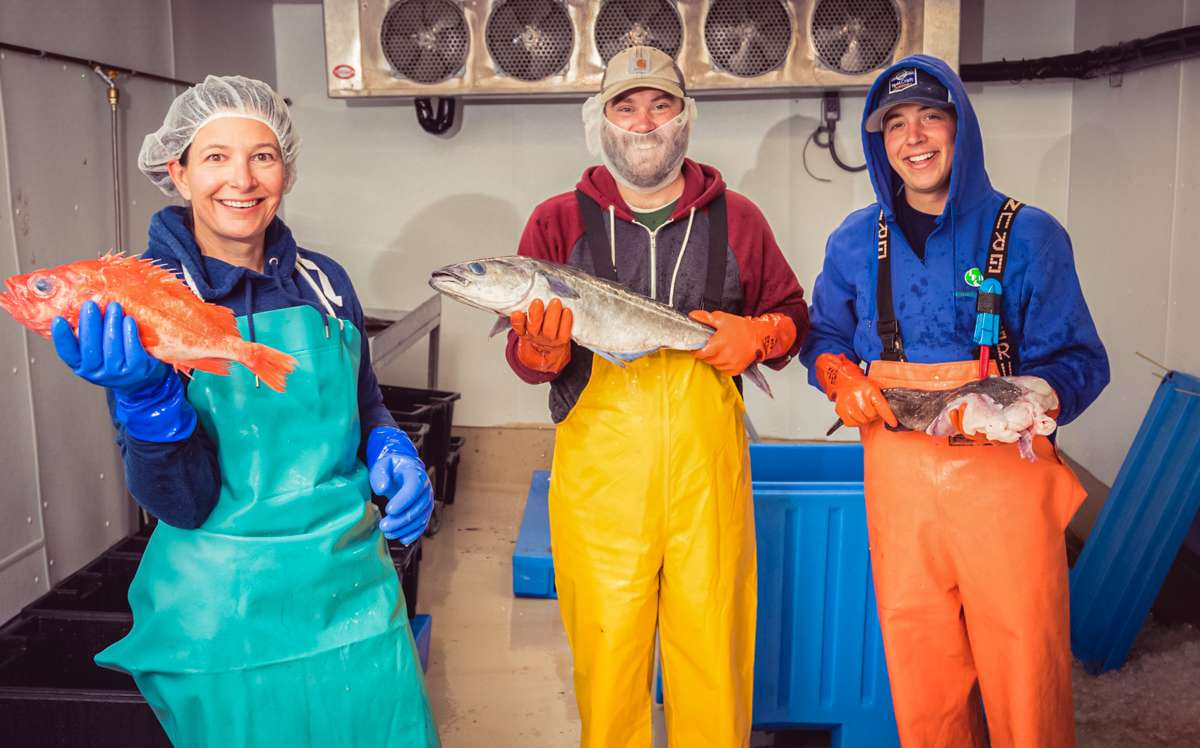
Processing Your Payment
Please do not leave this page until complete. This can take a few moments.
- News
-
Editions
View Digital Editions
Biweekly Issues
- December 1, 2025
- Nov. 17, 2025
- November 03, 2025
- October 20, 2025
- October 6, 2025
- September 22, 2025
- + More
Special Editions
- Lists
- Viewpoints
-
Our Events
Event Info
Award Honorees
- Calendar
- Biz Marketplace
Fishing for profit: Specialized seafood handling yields top-quality product, better prices
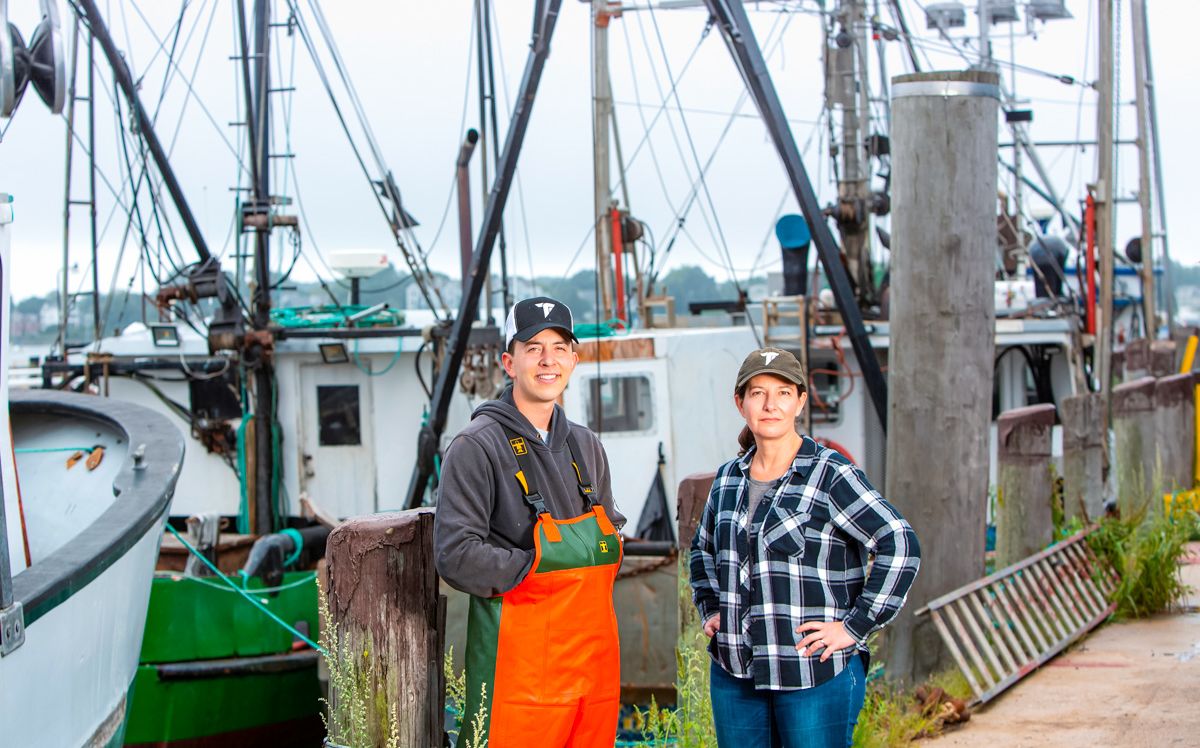 Photo / Tim Greenway
Jen Levin and Brendan Landry at True Fin in Portland say specialized handling practices yield top-quality seafood products that help fishermen obtain the best prices.
Photo / Tim Greenway
Jen Levin and Brendan Landry at True Fin in Portland say specialized handling practices yield top-quality seafood products that help fishermen obtain the best prices.
Commercial fishermen motoring back to port at midnight or 1 a.m., after a long day on the water, might be met at the wharf by a man hoping to share a couple of beers and talk about their fishing trip.
Brendan Landry, head of sourcing for Portland seafood processor True Fin, wants to learn about fishery operations — things like what and how they harvest.
Ultimately, he’s looking for harvesters who might be interested in implementing specialized handling practices designed to optimize product quality and grow the market for top-quality finfish and other species. In turn, fishermen receive a premium over conventional market prices.
“It’s my job to help them implement those handling practices to be as non-invasive with their current procedures as much as possible,” says Landry. “It’s a process.”
Mission-driven company
True Fin is the first “mission-driven” company launched by the Gulf of Maine Research Institute’s business development group, Gulf of Maine Ventures.
Launched in 2019, the goal was to create a market solution to the persistent problem of low prices and diminished landings for locally harvested Gulf of Maine fish. By training harvesters in specialized handling practices, the company has created a market for the high-quality, sustainable fish.
“We’ve got a nice, diverse portfolio we’re working with, including Michelin-starred restaurants as far as California, ordering from us week over week,” says Jen Levin, the company’s president and CEO.
Levin previously managed the Gulf of Maine Research Institute’s sustainable seafood program. In recent decades, she says, prices to fishermen have fallen. Consequently, fishermen are harvesting a fraction of the region’s allowed quotas for many species, because it’s just not worth the expense to go after them. That leaves distributors and retailers dependent on imported product.
For example, local mackerel is fished primarily for bait, and fishermen get paid an average of 21 cents per pound. And yet local chefs pay $23 per pound for whole, frozen mackerel imported from Japan.
Since there was clearly an established market for imported product, Levin approached chefs and distributors to determine their interest in domestically produced, high-quality fish. She talked with fishermen to assess whether they were interested in implementing specialized handling procedures designed to attain the quality chefs were seeking.
Those ideas launched True Fin, which last year worked with about two dozen harvesters in Maine, New Hampshire and Massachusetts. Now it’s developed relationships with about 60 boats that fish different species at different times of years. It has a network of restaurants, fish markets and distributors across the country.
The catch includes finfish species such as cod, pollock, hake and monkfish, as well as seasonally available items like tuna, halibut, squid and scallops. The company hand-cuts product at its 6,000-square-foot facility on Deake’s Wharf on the Portland waterfront.
Best handling
Fishermen who sell to True Fin receive at least a 20% premium over standard auction prices; depending on species and time of year, the premium could be as high as 400%. The company also establishes price floors for different species.
In turn, True Fin requires harvesters to use certain practices in order to optimize product quality.
Conventional handling often involves stowing fish in the hold, where they slowly suffocate. Stress during that time produces natural chemicals that get into the meat and break it down more quickly.

Best-handling practices are modeled after the Japanese practice “ike jime,” which means to kill with purpose. The fish are killed with a brain spike, which renders it brain-dead and eliminates stress. But the heart is still pumping. The fishermen then cut the fish at the gill and tail so they bleed out. After it’s bled, it goes into a salt-water ice slurry, where it cools quickly. Between the reduction of the stress-inducing chemicals and bleeding it out, the fish has a better texture and better taste, and lasts a lot longer because it doesn’t break down as quickly.
The Gulf of Maine Research Institute staff was introduced to ike jime in 2016, when it hosted a group of chefs and distributors to meet with fishermen from Kennebunkport to Port Clyde.
“One Japanese chef came from New York City for the tour, and he introduced us to the idea of ike jime, showing the fishermen and us videos,” says Levin.
The tour was exploratory to see whether there might be a match between high-end buyers and local fish and fishermen.
“That was the first time I really became aware of the specific handling techniques required to bring the quality of our catch to their standards,” she continues.
The technique takes practice and time to get it right and to make it work efficiently on the boat.
“It’s just like anyone doing something outside of their normal routine. This is partly what makes the fishermen we work with so extraordinary,” says Levin. “They put the extra effort in and literally change how they operate in order to get this level of quality.”
Wandering the docks
Landry, who was Levin’s first full-time employee, connects with fishermen “any possible way you can think of,” he says.
The job starts with listening.
“I was very, very green when I started,” he says. “I’d chat with a fisherman and they might know of someone else who might be interested. I’d wander along the docks looking for a groundfish boat that might be tied up. I would keep my mouth shut and my ears open and just listen.”
Landry now has connections from Stonington to Hyannis, Mass. Spending time at the docks and on the boats, his goal is to get an understanding of individual harvesting and handling practices and then to see if specialized procedures can be implemented without being too intrusive.
“It starts with me getting on the boat with them, seeing how they bring fish over the rail and move fish on the deck,” he says.
Some fishermen are skeptical.
“Most of them have been fishing longer than I’ve been alive,” says the 26-year-old Landry. “Some are second-, third-, fourth-, maybe even fifth-generation fishermen who have the knowledge passed down through their families, wondering what I have to offer. So that’s a challenge. Some fishermen don’t feel like the handling makes a big difference in what they’re catching.”
Better pay
Others are enthusiastic. Joe Letourneau fishes out of Newburyport, Mass., and has participated in research projects through GMRI and other marine research organizations. He and Levin were experimenting with handling methods before True Fin was founded.
Letourneau primarily fishes for groundfish such as cod, haddock, pollock, cusk, halibut and redfish. Summertime, he harvests tuna and mackerel. Spending at most two days at a time on the water harvesting with hook-and-line gear, he pays close attention to the ike jime method and monitors the temperature and salinity of his ice slurry.
As a result, sales to True Fin have significantly boosted his income.
“Without a question,” he says.
The species he targets that most fall in line with True Fin’s mission, he says, are redfish, pollock and cusk. Typically, Acadian redfish earns an average of 30 cents to 40 cents per pound.
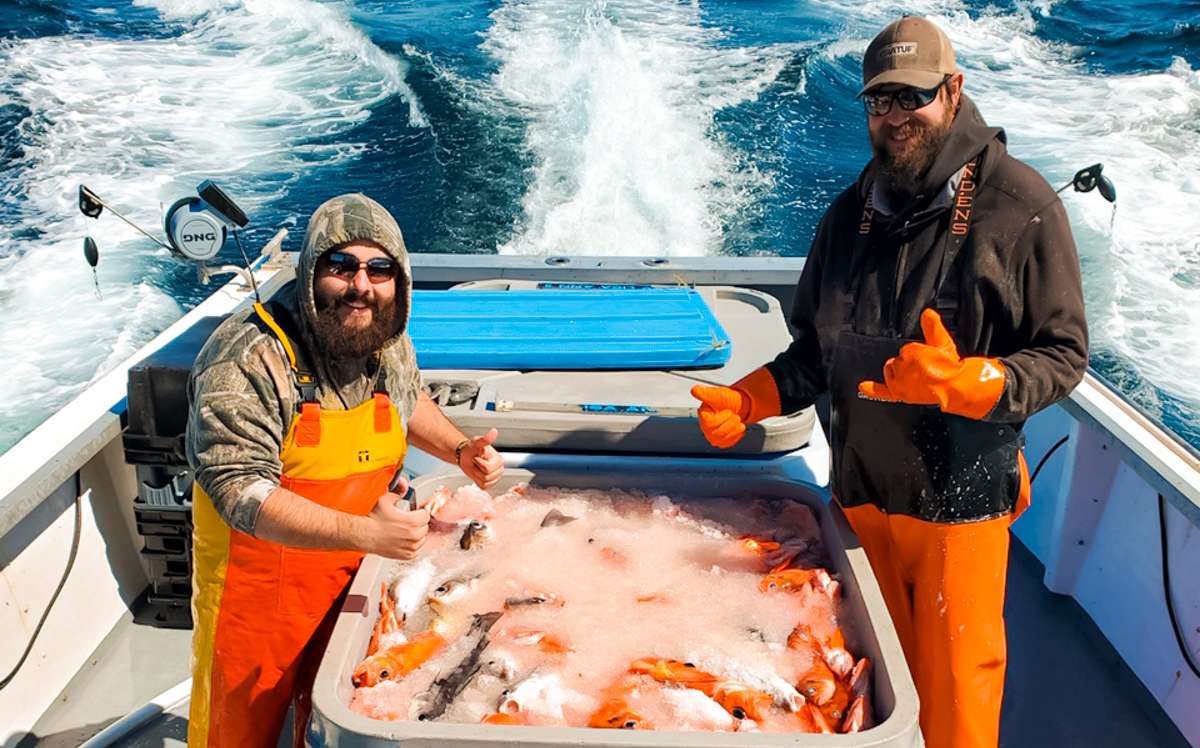
“Since working with Jen, I get $2 per pound for redfish,” he says.
Cusk typically averages 35 cents to 55 cents per pound but is earning $2 per pound through True Fin.
“We find it’s definitely a financial advantage, even with the added handling,” Letourneau says.
Letourneau says the added handling hasn’t slowed him down now that he has the new procedures dialed in and has set up his work station accordingly.
Other fishermen are showing interest, he says.
“I find a lot of fishermen are interested in why I’m getting $2 when they’re getting paid 35 cents,” he says.
Still, he adds, the process doesn’t suit all fishing operations, such as those that might be focused more on volume.
“It’s got to be the right fit,” he says.
Chef partnerships
To date, Landry has developed relationships with about 60 boats that sell different products to True Fin at different times of year. Recently, he was working with about 10 boats that were harvesting mackerel, squid, bluefin tuna and groundfish.
“This is a busy time of year,” he notes.
On average, the company moves about 4,000 pounds per week.
Early in the pandemic, True Fin lost its wholesale customers and transitioned to a direct-to-consumer model that worked well, enrolling a couple of thousand local consumers. This summer, the company ended individual pickups as restaurant and distributor sales ramped up.
It wasn’t difficult to reestablish those relationships.
“Throughout COVID, even when restaurants were closed and when distributors didn’t have business for us, I kept in touch with them,” says Levin.
One of the most successful means of getting on the radar of chefs is social media, she adds.
“When our chef-partners tag us and post and say they’ve got this glorious fish from us, other chefs notice that,” she says. “Sometimes it’s geographic. A chef in Nashville posts something; next thing we know, we’ve got this neat little cohort of Nashville chefs.”
Last year, True Fin issued a $1 million convertible note to support its growth. The financing allowed the company to invest in marketing and branding. It provided cash flow that allows the company to purchase product from fishermen right away while freezing inventory for year-round sales; hire an operations manager; and invest in equipment designed to increase production efficiency, including a Japanese “super freezer” that preserves seafood at minus-76 degrees Fahrenheit and a large-capacity vacuum seal machine that packages one-pound portions for online sales.
Employee numbers have grown from three before the pandemic to seven today. Levin says she’s on the lookout for more hires.
The company is also seeking to recruit new fishermen.
“We like to have as many species as possible in any given week based on what’s in season,” says Landry. “So we’re always looking for different boats fishing different gear types at different times of year. It’s a balance that depends on what the ocean offers.”
Mainebiz web partners

The Giving Guide
The Giving Guide helps nonprofits have the opportunity to showcase and differentiate their organizations so that businesses better understand how they can contribute to a nonprofit’s mission and work.
Learn More
Work for ME
Work for ME is a workforce development tool to help Maine’s employers target Maine’s emerging workforce. Work for ME highlights each industry, its impact on Maine’s economy, the jobs available to entry-level workers, the training and education needed to get a career started.
Learn More
Groundbreaking Maine
Whether you’re a developer, financer, architect, or industry enthusiast, Groundbreaking Maine is crafted to be your go-to source for valuable insights in Maine’s real estate and construction community.
Learn more-
The Giving Guide
The Giving Guide helps nonprofits have the opportunity to showcase and differentiate their organizations so that businesses better understand how they can contribute to a nonprofit’s mission and work.
-
Work for ME
Work for ME is a workforce development tool to help Maine’s employers target Maine’s emerging workforce. Work for ME highlights each industry, its impact on Maine’s economy, the jobs available to entry-level workers, the training and education needed to get a career started.
-
Groundbreaking Maine
Whether you’re a developer, financer, architect, or industry enthusiast, Groundbreaking Maine is crafted to be your go-to source for valuable insights in Maine’s real estate and construction community.
ABOUT
NEW ENGLAND BUSINESS MEDIA SITES
No articles left
Get access now
In order to use this feature, we need some information from you. You can also login or register for a free account.
By clicking submit you are agreeing to our cookie usage and Privacy Policy
Already have an account? Login
Already have an account? Login
Want to create an account? Register
Get access now
In order to use this feature, we need some information from you. You can also login or register for a free account.
By clicking submit you are agreeing to our cookie usage and Privacy Policy
Already have an account? Login
Already have an account? Login
Want to create an account? Register






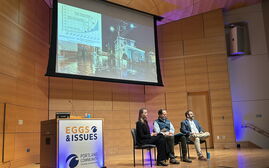

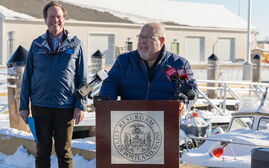


0 Comments